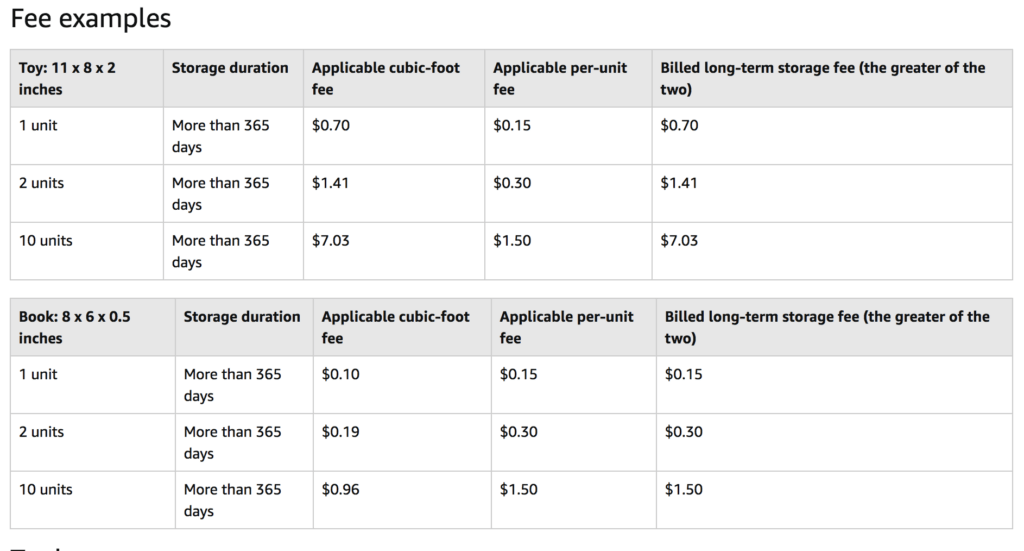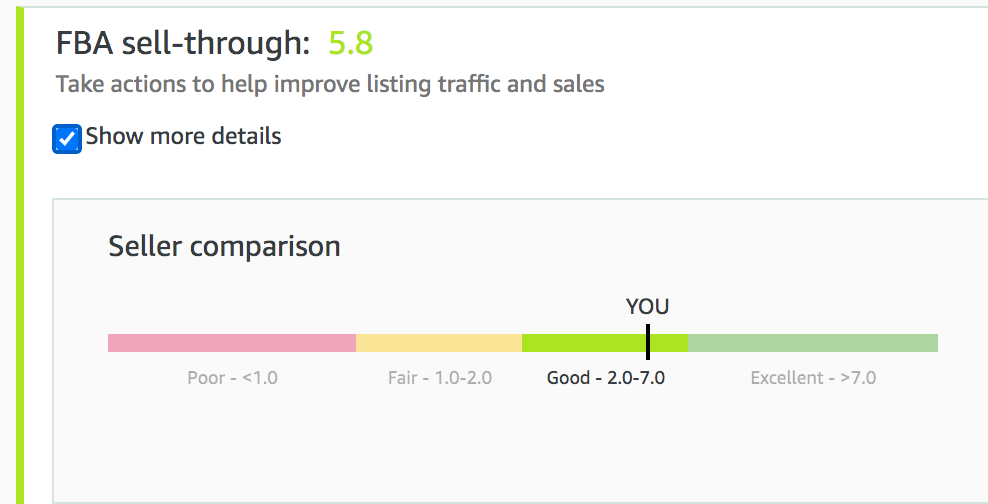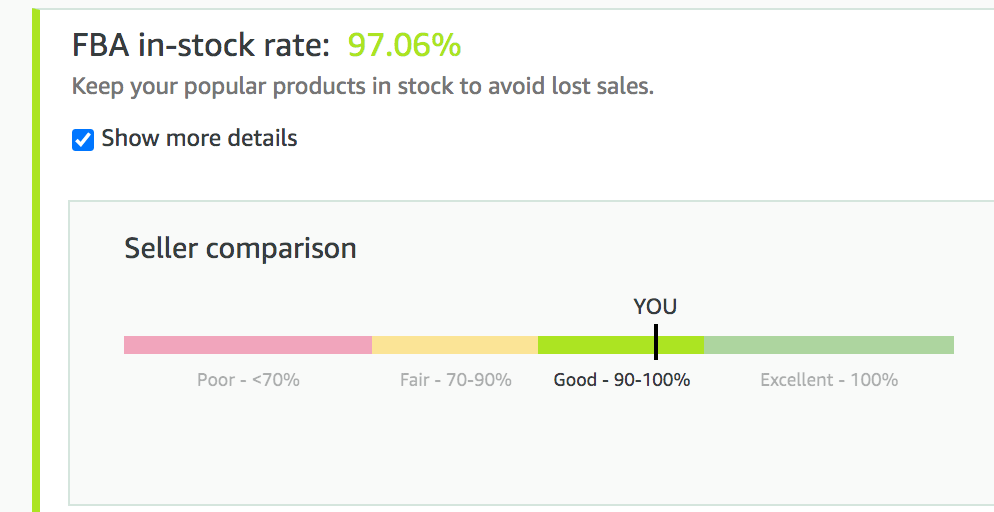Inventory management is an integral part of running a successful Amazon business. With it, you lessen the likelihood of encountering two major profit killers: losing sales by going out of stock, and accruing costly storage fees from overstocking.
Good inventory management is about finding that perfect balance between too little and too much stock. With the right strategies in place, you’ll be able to figure out how often you need to be reordering to maintain optimal inventory levels.
In this article, we’ll go over best practices for proper inventory management and strategies to follow. As well as free and paid solutions you can use to automate your inventory management.
Why is inventory management important?
These days, customers don’t have patience for poor inventory management. Their expectations for convenience and delivery speed when shopping online are high: 68% of U.S. consumers expect their items to arrive within zero to three days of purchase, and 47% are willing to spend more for a product with faster shipping. Online shoppers don’t want to wait around for products to come back in stock — and the majority (70%) would be upset if their order arrived late.
If you constantly run out of inventory, your customers will then have no choice but to purchase from your competitors, increasing their organic ranking as yours diminishes each day you’re out of stock. On the other hand, if you overstock your inventory, you tie up capital in your business and run the risk of long-term storage fees if utilizing FBA.
A lot of factors affect inventory management as an Amazon seller: your supplier’s manufacturing and shipping times, customs delays, FBA storage capacity and fees, and sell-through rate all play a role.
When you first launch a new product on Amazon, it can be difficult to figure out how much inventory you should order based on current demand and competition. After all, your brand-new listing will have no reviews, and without that social proof it won’t convert as well as your competitors’ listings 一 at least not right away.
Over time, you will learn how fast your inventory sells, so you can more accurately order to avoid overstock or selling out completely.
Common inventory issues Amazon sellers face
Most sellers run into inventory problems at some point 一 and that’s ok! You just need to be prepared to handle the issues that inevitably pop up.
Running out of inventory
Not having enough products in stock to meet demand can impact your sales as well as the overall ranking of your listing.
Here’s some great advice from Eva Hart, one of our Amazon experts here at Jungle Scout:
“Never go out of stock because it hurts your Best Seller Rank. A great way to stay in stock when you’re running low on inventory and waiting on a shipment is to slow things down on the demand side. You can do this by pausing marketing strategies such as off-channel ads or campaigns, and by setting a higher price point for your product. This will help brands keep the customers they already have, but slow down acquiring new ones.”
You want to avoid going out of stock at all costs — even if you have to intentionally slow your sales by toning down advertising and notching up your sales price. As Eva notes, customers familiar with your brand may continue to buy from you, but you’ll have a harder time reaching new customers unless you are already ranking well organically for your main keywords.
The longer you are out of stock, the more damage you are causing to your Best Sellers Rank and organic keyword ranking. Amazon wants to promote products that are consistently available. If yours aren’t, you’ll be penalized, and it may be difficult for you to recover from lost ranking.
Overstocking inventory
While you never want to run out of inventory, you don’t want to overstock your products either. This can tie up capital you could otherwise use to replenish your faster-selling products, and can cause you to accumulate costly storage fees with Amazon if you are using FBA.
If your product has over 90 days of supply and/or at least one unit aged over 90 days, Amazon considers its excess inventory. Remember, Amazon is not a storage facility but a fulfillment center. They want products to move in and out within a 90-day span — the quicker the better.
Excess inventory affects your overall IPI (inventory performance index) score. Having too much inventory in Amazon’s fulfillment centers, they will reduce your inventory storage limits and charge you monthly and long-term storage fees. These bills add up — sometimes to sums greater than the value of your unsold inventory!
If you have inventory stored in FBA, Seller Central offers tools to help you determine if you have excess inventory, as well as address stranded inventory and long-term seller fees.

Even if you’re using FBM (fulfillment by Merchant), your money may be tied up in slow-moving inventory. If you are using a third-party fulfillment center, you could be accumulating storage fees with them as well.
Stranded inventory
Stranded inventory is a common issue many sellers don’t know how to fix. This happens when inventory stored in Amazon’s warehouse is no longer connected to an active listing on Amazon. It’s basically in limbo — it’s sellable, but no customers can actually purchase it.
The worst part about stranded inventory is that even if your products are not listed for sale, you will still be charged monthly storage fees for each unit.
Luckily, Amazon will list the inventory that is stranded within your Inventory Dashboard. You just need to actively check this section every so often, as you will not receive alerts from Amazon.

It is a confusing topic, so if you come across this issue, please read our guide on the “Reasons for Amazon Stranded Inventory and How to Address Them.”
Long-term storage fees
Let’s come back to the topic of carrying excess inventory in an Amazon fulfillment center. It’s another thing you should avoid, as you can rack up a large bill from Amazon, depending on how many of your stored units are considered long-term.
On the 15th of each month, Amazon assesses its entire fulfillment network to calculate the age of each seller’s stored inventory. Your inventory age is calculated from the day it arrives at FBA warehouses. Any inventory that has been stored for more than a year will be subject to long-term storage fees in addition to the usual monthly storage fees.
Amazon states: “Inventory that has been in a fulfillment center for more than 365 days will be charged a monthly long-term storage fee of $6.90 per cubic foot or $0.15 per unit, whichever is greater.”
Here are some fee examples provided on Amazon’s long-term storage help page:

There are various tools and reporting within Seller Central that will help you avoid getting hit with long-term storage fees.
Restock Inventory Tool: This tool will show you how many days of supply you have left for each product and the recommended replenishment amount to send into FBA.
Manage Excess Inventory Tool: This tool will show you each listing that may have excess inventory levels and will provide you with some action steps. It will also suggest things such as lowering prices or advertising to help move slow inventory.
FBA Inventory Age Tool: Learn how long your inventory has been stored in FBA and which units may be subject to long-term storage fees. This tool also shows you metrics such as estimated storage costs and identifies opportunities for you to increase your sales on stale inventory.
Stranded Inventory Tool: This tool will alert you to any stranded inventory you may have. From there, you should reactivate the inventory or remove it to prevent costly storage fees.
Manage FBA Returns Tool: This is where you can manage all of your FBA returns. See metrics such as return date, customer refund date, date return received, return status, and more.
6 tips for properly managing inventory
Stay ahead of your competitors with proper inventory management skills. Let’s go over a few tips and strategies to follow so you have more control over your inventory.
1. Keep a close relationship with your supplier
You should put in effort to build and nurture relationships with your suppliers — they’re responsible for bringing your product ideas to life!
If you have a good relationship with your supplier, they will often prioritize your orders over another customer of theirs. Otherwise, you may be waiting a long time for your products to be completed, thus causing a stockout on your end. Understand how they work and how you as a brand can make their job easier.
“Many large brands have an employee dedicated to supplier relationship management. They often take trips to Asia (or wherever) to visit suppliers and have a regular cadence for communication.” – Eva Hart, Jungle Scout
Respect and proper communication go a long way with your suppliers. If you treat them right, they will treat you right.
As you work more closely with your supplier, you’ll have a solid understanding of the lead times in your supply chain. Knowing how long it takes to manufacture, ship, and be received at Amazon is a must.
2. Maintain around 60 days of supply
Do your best to keep around 60 days worth of inventory on hand at all times to cover your expected sales volume. This will help you avoid overstocking as well as going out of stock. You can forecast your sales volume by reviewing Amazon’s inventory reports as well as by monitoring your sell-through rate.
Your sell-through rate for FBA is measured by how well you are balancing your inventory levels and sales. It’s calculated by dividing the total units sold and shipped to customers over the past 90 days by the average number of FBA inventory units during that same time period.
You can see your sell-through rate for each product you sell under the “Inventory Age” section in the Inventory Dashboard in Seller Central.

A sell-through rate is over 7 is considered excellent. This means you are selling 7 times more units than you are storing on average. If your sell-through rate is less than 1, this means you held more inventory than you sold in the past 90 days.

A low sell-through rate means you are overstocking units and need to figure out ways to reduce your inventory in FBA.
3. Reduce excess inventory
If you overestimated the sales volume of one of your products, don’t worry! It happens to everyone 一 even big brands.
There are a few different ways to deal with excess inventory.
Run promotions: This can include using coupons codes, buy-one-get-one deals, or running steep discounts. Lowering your price is usually a great way to accelerate sales for slow-moving inventory. Even if you’re taking a slight loss in sale price, it could amount to less than what you would owe in long-term storage fees if the units continue to sit in storage.
Raise your keyword bids: If you are running ads for your products (which you should be doing anyway) a good way to get in front of more customers to get rid of the product is to raise the bids on keywords you are targeting. This strategy, paired with lowering your price, is a sure-fire way to move stale inventory.
Create a removal order: If you have another place to store inventory other than Amazon, create a removal order in Seller Central and have the inventory sent to you before getting hit with large storage fees. Amazon at times will run promotions where they will remove the inventory for free.
Liquidate the inventory: Liquidation is usually a last resort but if all other efforts fail, you can try to sell all of your remaining inventory in bulk at a large discount. This will allow you to gain back some capital that can be reinvested into a better-selling product.
Donate the inventory: You also have the option of donating your products to charity organizations or non-profit such as Goodwill. You can often write off the donated inventory on your taxes to make up for the losses.
4. Plan for the unexpected
Not everything runs smoothly all the time. You may have delays with your supplier, shipping delays, customs delays, FBA warehouse delays, and other issues. The COVID pandemic was a perfect example of this: disrupted manufacturing and supply chains resulted in 53% of U.S. consumers experiencing difficulty finding products online beginning in March 2020.
If you can, order backup units just in case something happens along your supply chain.
This can include storing extra units in your own warehouse or even using a third-party storage/fulfillment center. In the event of a delay, you can maintain stock in FBA without worry, or even fulfill orders using FBM.
This is only recommended if you can accurately predict the demand for your product and have the ability to order and store additional units. Do not order extra if you are short on capital or storage space.
5. Lower the demand for your product if running low on inventory
As we talked about above, you can influence demand by raising your price and pausing your advertising campaigns if you are running low on inventory. This is a great way to maintain your in-stock rate, as it does help improve your IPI score.

It is better to slow down your sales, even if it slightly affects your rankings, than it is to completely go out of stock. Once you have a healthy amount of inventory available in FBA, you can resume your normal price points and advertising campaigns.
6. Use inventory management software
Having a reliable inventory management system in your arsenal will put you way ahead of any competitors who aren’t using one. Software such as Jungle Scout’s Inventory Manager will help you effectively manage your inventory levels and mitigate the risks we talked about above.
Inventory Manager is an advanced demand forecasting tool designed to accurately calculate your inventory needs for your Amazon FBA business. The tool will predict future sales based on demand that will help you determine how much inventory to order to avoid stockouts or overstocking.
Jungle Scout’s Inventory Manager can help
To fully automate inventory management for your Amazon business, there is no better tool for the job than Jungle Scout’s Inventory Manager. This tool’s game-changing benefit is that it accurately predicts how much inventory you need and when to order it.
While Amazon’s internal tools and reports can help you figure out the age of your inventory and ways to deal with excess inventory, Inventory Manager will calculate the exact date you should reorder your inventory along with the estimated costs and profits. The tool will mark each product as “Reorder Now,” “Reorder Soon,” “Overstock,” and “In Stock” to give a quick overview of your inventory needs. That way, you can avoid future stockouts.
Inventory Manager is available with the Suite or Professional Jungle Scout plans.
Always stay in stock with proper inventory management
Not only does proper inventory management keep your best-selling products in stock at all times, but it also prevents you from overstocking slow-moving items and tying up capital in your business.
We hope this guide shows you how important inventory management really is. By using the tools provided by Amazon and a reliable inventory management system such as Inventory Manager, your Amazon business will be running efficiently and profitably.
Do you have any more questions about managing your inventory? Let us know in the comments!

 3 Comments
3 Comments
3 comments on “Amazon Inventory Management 2021 Guide”